LGBTQIA+ Pioneers in Medicine and Science
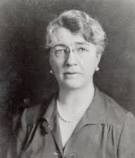 Dr. Louise Pearce (March 5, 1885 – August 10, 1959)
Dr. Louise Pearce (March 5, 1885 – August 10, 1959)
Dr. Louise Pearce, a physician and pathologist, was one of the foremost female scientists of the early 20th century. Her research led to a cure for trypanosomiasis (African Sleeping sickness) in 1919.
In 1920, when a severe outbreak of the disease broke out in the Belgian Congo, (modern day Zaire), Dr. Pearce, then 35 years old and attracted by the adventures of field research, volunteered to go alone to Leopoldville to test the new drug. The Rockefeller Institute sent Pearce, “trusting her vigorous personality to carry out an assignment none too easy for a woman physician and not without its dangers.” Studying the effect of each dose of tryparsamide on more than seventy patients, Pearce saw the parasites were completely eradicated within a few weeks of the treatment. Belgian officials, impressed and grateful for her results, awarded her the Ancient Order of the Crown and elected her a member of the Belgian Society of Tropical Medicine. For many years, Dr. Louise Pearce lived with physician Sara Josephine Baker and author Ida A. R. Wylie and is even buried alongside them. All were members of Heterodoxy, a feminist biweekly luncheon discussion club, of which many members were lesbian or bisexual.
Source: https://www.touchcare.com/lgbt-in-medicine/

Dr. Sara Josephine Baker (November 15, 1873 – February 22, 1945)
Dr. S. Josephine Baker expanded the scope of public health care as the first director of New York's Bureau of Child Hygiene from 1908 to 1923. In 1917, she became the first woman to earn a doctorate in public health from the New York University and Bellevue Hospital Medical College (later the New York University School of Medicine).
Dr. Sara Josephine Baker was born in 1873 in Poughkeepsie, New York, to Daniel Mosher Baker, a lawyer, and Jenny Harwood Brown, one of the first graduates of Vassar College. When Baker's father died suddenly when she was sixteen, she gave up a Vassar scholarship to go to medical school to train for a secure career as a physician. Despite the opposition of family members who were skeptical of women physicians, Dr. Baker persuaded her mother that she was making the right decision.
Dr. Baker joined the Woman's Medical College of the New York Infirmary in 1894 (founded in 1868 by Elizabeth Blackwell and her sister, Emily Blackwell). She took full advantage of the opportunity to work with a network of very successful female physicians, including Mary Putnam Jacobi, negotiating a year's internship at the New England Hospital for Women and Children in Boston after graduation in 1898. That year she came to understand the connection between poverty and ill health that would occupy her for the rest of her career.
Dr. S. Josephine Baker opened a private practice in New York in 1899, but to help cover costs took extra work as a medical examiner for the New York Life Insurance Company. She also worked part-time as a medical inspector for the city — her first foray into public health and the beginning of her association with city health administration.
In 1907 Dr. Baker was made assistant commissioner of health, working on a number of high-profile health issues including smallpox vaccination. She was also instrumental in identifying "Typhoid Mary" — Mary Mallon, a cook who had worked in several New York households and had unwittingly caused a small typhoid epidemic in the city. The widely publicized case fueled fears about hidden health dangers and paved the way for broader public health programs to improve standards of hygiene.
Source: https://cfmedicine.nlm.nih.gov/physicians/biography_19.html
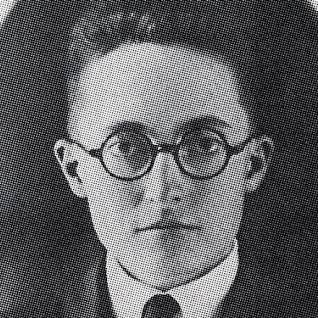 Dr. Alan L. Hart (October 4, 1890 – July 1, 1962)
Dr. Alan L. Hart (October 4, 1890 – July 1, 1962)
As a child Dr. Alan L. Hart, who was assigned female at birth, was allowed to dress and live as a boy with both parents freely supporting his gender expression. Attending Albany College and then Stanford, he received his PhD. from The University of Oregon. In 1918 he married Inez Stark, using the name Robert Bamford. Later that year he had a hysterectomy, changed his name to Alan L. Hart, and started a medical practice. Eventually recognized by a classmate from medical school, the couple began a recurring pattern of relocation and job changes. The stress of the continual secrecy led to their divorce. In 1925 Alan remarried and from 1935-1942 wrote four novels (including Doctor Mallory and In the Lives of Men) set in the Pacific Northwest dealing with social issues within the medical field.
Professionally Dr. Hart began to focus more on research – receiving his Masters Degree in Radiology in 1930 and another in Public Health in 1948. After years of trying to keep a low profile, in the late 1940s Dr. Hart began taking newly available synthetic male hormones which enabled him to grow a beard and lowered his voice sufficiently to give him the confidence to begin lecturing. He became a prominent figure in the study of Tuberculosis. Highly contagious, especially among close-quartered urban dwellers, with no available tests and no known treatment, Tuberculosis became one of the most virulent killers in U. S. History. Hart was one of the first to document how the disease was spread and how the isolation of carriers from the general public was key to slowing it - if it could be detected in its earliest stages. Speaking nationwide on Tuberculosis care, Dr. Hart dedicated all his time to fundraising for medical research and to help support economically challenged TB patients. In a move to end the stigma of the disease, Hart spearheaded a massive, nationwide campaign to use X-Ray Technology to screen people. This extremely successful detection effort led to earlier diagnoses to isolate carriers in publicly supported sanatoriums so they could recover before infecting others. All of the groundbreaking, visionary work Dr. Hart championed took place 20 years before the epidemiological test for tuberculosis was developed. As a result, it is thought that millions of lives were saved because of this one man's commitment. Dr. Hart lived his entire life with most people completely unaware he was Transgender. Even those who have studied his research are still mostly unaware of it. In spite of his unparalleled impact on history, he passed away in obscurity from complications due to heart disease in 1962.
Source: https://legacyprojectchicago.org/person/alan-l-hart
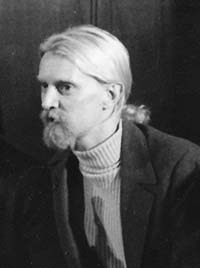 Dr. Bruce Voeller (May 12, 1934 – February 13, 1994)
Dr. Bruce Voeller (May 12, 1934 – February 13, 1994)
Dr. Bruce Raymond Voeller, a pioneer of AIDS research and a significant early gay rights activist, was born on May 12, 1934 in Minneapolis, Minnesota. He’s no household name, and his early biography would provide few hints as to why he should be. He graduated from Reed College in 1956, was awarded a five-year fellowship to the Rockefeller Institute, earned his Ph.D. in biology in 1961, and by 1966 became an associate professor at the Rockefeller Institute specializing in plant physiology and phtocytology.
But at age 29, Dr. Voeller came out as a gay man, forever changing his life and the focus of his research and work. He became a specialist on human sexuality and sexually transmitted diseases who was at the forefront of the fight against AIDS while also leading the fight for gay rights. He became one of the most important (and unsung) gay rights advocates of the post-Stonewll period. And nearly all of his groundbreaking work was done from our neighborhoods.
Dr. Voeller was an early president of the Gay Activists Alliance (GAA – founded in 1969), whose other early leaders included its founding president Jim Owles and Arnie Kantrowitz, who was at one point secretary and vice president. All three men made their home in the 1970s and early 1980s at 186 Spring Street, in what Kantrowitz described as a “gay commune” (a building which Village Preservation sought to save from demolition with landmark status, but which in 2012 the City shamefully allowed to be demolished, and remains a hole in the ground today).
The GAA played a key role in having the first bill introduced in the New York City Council and in the New York State Legislature in 1971 that would have banned discrimination based upon sexual orientation. Even more impressive, these were the very first “gay rights” bills ever introduced anywhere in the country. Versions of these bills were enacted by the City of New York in 1986 and the State of New York in 2002, but it must also be noted that since this first bill was introduced at the initiation of these residents of 186 Spring Street (among others), twenty-two states and the District of Columbia, as well as literally hundreds of municipalities and counties, have passed similar legislation.
Dr. Voeller left the GAA to found the National Gay Task Force (which became the National Gay and Lesbian Task Force in 1985 and is now the National LGBTQ Task Force) on October 15, 1973, where he served as director until 1978. The Task Force was the very first national LGBT rights organization in the United States, accomplishing groundbreaking changes in those first dozen or so years and laying the foundation for many more in the years which followed, as well as initiating battles for civil rights which are still being fought today.
Source: https://www.villagepreservation.org/2021/05/12/dr-bruce-voeller-gay-rig…
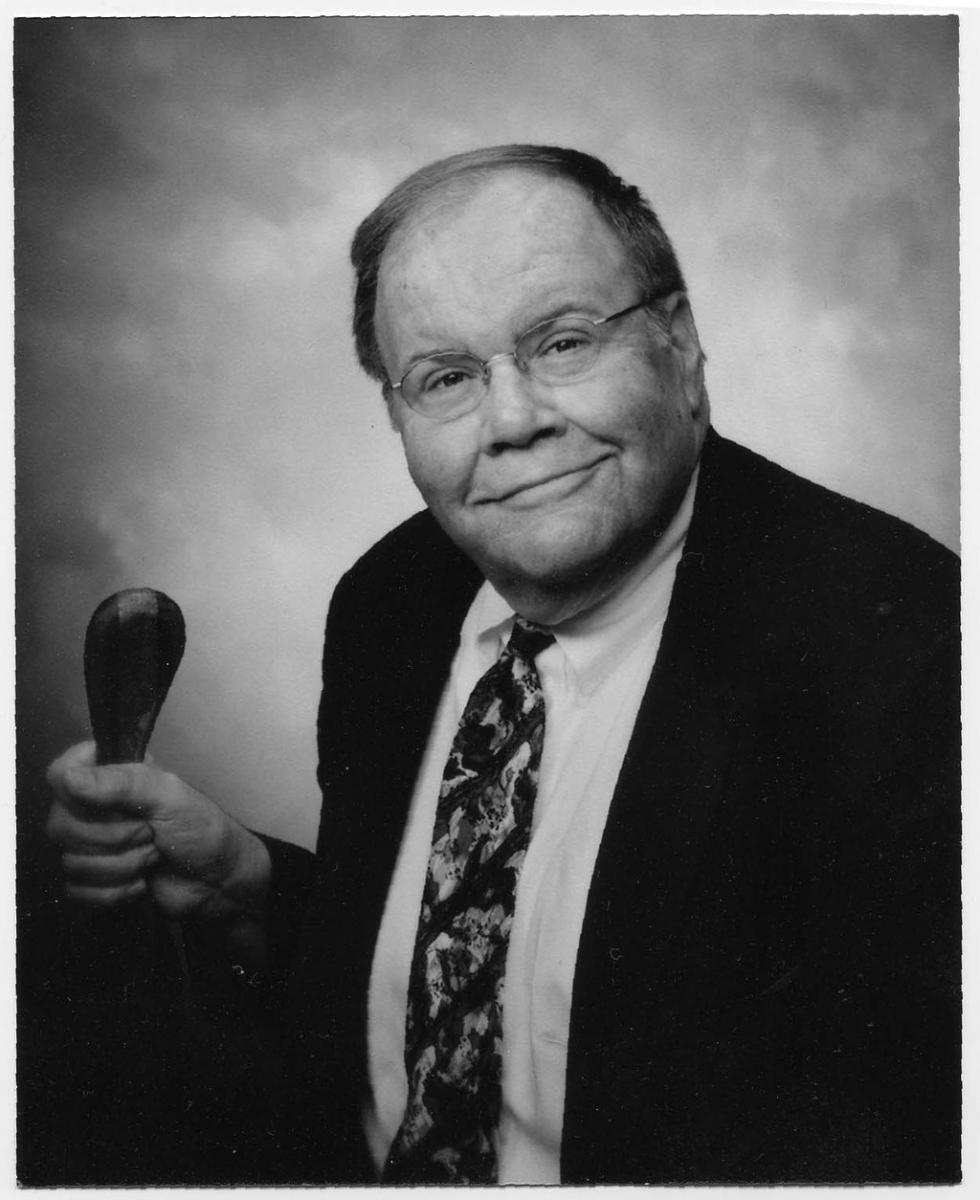 Dr. John Ercel Fryer (November 7, 1937 – February 21, 2003)
Dr. John Ercel Fryer (November 7, 1937 – February 21, 2003)
Dr. John E. Fryer's speech to the 1972 annual meeting of the American Psychiatric Association was a landmark in the struggle to declassify homosexuality as mental illness. As a psychiatrist who was also gay, Dr. Fryer's perspective was particularly powerful. In his medical career he had been thrown out of a residency and lost a job because of his sexuality. Fearing professional ruin (he was at the time an untenured professor), he delivered his speech disguised as "Dr. Anonymous," wearing a mask and using a voice distorter to avoid recognition. One year later, the American Medical Association removed "homosexuality" from its list of diseases. Dr. Fryer did not reveal his identity as "Dr. Anonymous" until over 20 years later, during the 1994 APA annual meeting in his hometown of Philadelphia. He received a Distinguished Service Award from the Association of Gay and Lesbian Psychiatrists in 2002.
Dr. Fryer was born in Kentucky, graduated high school at age 15, graduated at age 19 from Transylvania College in Lexington, KY, and attended Vanderbilt University Medical School. He completed a medical residency at Ohio State Hospital and began a psychiatry residency at University of Pennsylvania, but was forced to leave the program when his sexuality was discovered. He later completed his residency in psychiatry at Norristown State Hospital. He taught at Temple University Medical School for over 30 years and ran a private practice.
Source: http://digitalhistory.hsp.org/pafrm/person/john-ercel-fryer
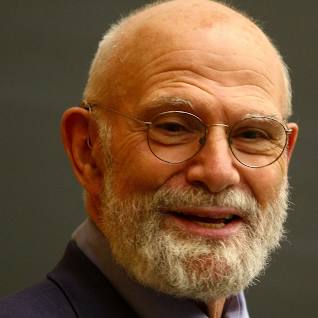 Dr. Oliver Sacks (July 9, 1933 - August 30, 2015)
Dr. Oliver Sacks (July 9, 1933 - August 30, 2015)
Dr. Oliver Sacks was born in 1933 in London, England, into a family of physicians and scientists (his mother was a surgeon and his father a general practitioner). He earned his medical degree at Oxford University (Queen’s College), and did residencies and fellowship work at Mt. Zion Hospital in San Francisco and at UCLA. He lived and practiced neurology in New York. From 2007 to 2012, he served as a Professor of Neurology and Psychiatry at Columbia University Medical Center, and he was also designated the university’s first Columbia University Artist. Dr. Sacks was also a professor of neurology at the NYU School of Medicine, where he practiced as part of the NYU Comprehensive Epilepsy Center. He was also a visiting professor at the University of Warwick.
In 1966 Dr. Sacks began working as a consulting neurologist for Beth Abraham Hospital in the Bronx, a chronic care hospital where he encountered an extraordinary group of patients, many of whom had spent decades in strange, frozen states, like human statues, unable to initiate movement. He recognized these patients as survivors of the great pandemic of sleepy sickness that had swept the world from 1916 to 1927, and treated them with a then-experimental drug, L-dopa, which enabled them to come back to life. They became the subjects of his book, Awakenings, which later inspired a play by Harold Pinter (“A Kind of Alaska”) and the Oscar-nominated feature film (“Awakenings”) with Robert De Niro and Robin Williams.
Dr. Sacks is perhaps best known for his collections of case histories from the far borderlands of neurological experience, The Man Who Mistook His Wife for a Hat and An Anthropologist on Mars, in which he describes patients struggling to live with conditions ranging from Tourette’s syndrome to autism, parkinsonism, musical hallucination, epilepsy, phantom limb syndrome, schizophrenia, retardation, and Alzheimer’s disease.
He has investigated the world of Deaf people and sign language in Seeing Voices, and a rare community of colorblind people in The Island of the Colorblind. He has written about his experiences as a doctor in Migraine and as a patient in A Leg to Stand On. His autobiographical Uncle Tungsten: Memories of a Chemical Boyhood was published in 2001, and his most recent books are Musicophilia, The Mind’s Eye, and Hallucinations.
Dr. Sacks’s work, which has been supported by the Guggenheim Foundation and the Alfred P. Sloan Foundation, regularly appears in the New Yorker and the New York Review of Books, as well as various medical journals. The New York Times has referred to Dr. Sacks as “the poet laureate of medicine,” and in 2002 he was awarded the Lewis Thomas Prize by Rockefeller University, which recognizes the scientist as poet. He is an honorary fellow of both the American Academy of Arts and Letters and the American Academy of Arts and Sciences, and holds honorary degrees from many universities, including Oxford, the Karolinska Institute, Georgetown, Bard, Gallaudet, Tufts, and the Catholic University of Peru.
Source: chrome-extension://efaidnbmnnnibpcajpcglclefindmkaj/https://www.oliversacks.com/wp-content/uploads/2022/03/OS-Long-Bio.pdf
 Dr. Ben Barres (September 13, 1954 – December 27, 2017)
Dr. Ben Barres (September 13, 1954 – December 27, 2017)
Dr. Ben Barres (born Barbara Barres) was a passionate researcher of the role of glia, the most numerous type of brain cell, in development and disease. He was also an ardent campaigner for equal opportunity in science. He died of cancer aged 63, on 27 December 2017. As Barbara and as Ben (he transitioned genders in 1997), Barres made numerous landmark discoveries. These include the identification of glial-derived factors that promote the formation and elimination of synapses, and the characterization of signals that induce the formation of myelin, the lipid sheathing on neurons.
Dr. Barres devoted much of his last decade to publicly describing the challenges he had faced as a woman in science, and offering ways to correct a system that he viewed as fundamentally biased against the advancement of women and minorities. He also called for mentors to be held more accountable for the training and success of their graduate students and postdocs. Barres took tremendous pleasure from working on important but neglected problems. “Ninety-nine per cent of neuroscientists work on 1% of the interesting questions,” he said, “It is so much more exciting to work on the untouched mysteries!” His findings and vocal presence at meetings were largely responsible for the acceptance that glial cells contribute to brain development, function and disease.
Dr. Barres was raised in West Orange, New Jersey and loved mathematics and science from an early age. He never felt comfortable being treated as a girl. At school, Barres repeatedly requested, but was denied, access to courses in science and engineering. A summer science program with no gender restrictions at Columbia University in New York City finally provided access to these subjects, and led him to pursue a bachelor of science degree in biology at the Massachusetts Institute of Technology in Cambridge.
In 1979, Dr. Barres completed a medical degree at Dartmouth College in Hanover, New Hampshire, and then a neurology residency at Weill Cornell Medicine in New York City. He was intrigued that so many of the diseases that impair brain and nervous-system function involve glial cells, yet so little was known at the time about their biology. Dr. Barres left medicine to do a doctorate in neurobiology at Harvard Medical School in Boston, Massachusetts, on the function and distribution of cation channels in glial cells. During a postdoc at University College London, Dr. Barres discovered that developing neurons provide signals to the myelinating glial cells — the oligodendrocytes — to insulate neuronal axons. Dr. Barres started his own lab in 1993, in the neurobiology department at Stanford University School of Medicine in California. He mentored dozens of students and postdocs. Dr. Barres’ lab meetings were legendarily intense. They often lasted three hours or more owing to the large number of people in attendance, the vast range of topics covered and the open, somewhat unstructured discourse that Dr. Barres encouraged.
